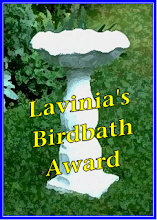 my photoCOMMA
my photoCOMMAThe beautiful Comma butterfly, with its crinkle edges, is often spotted at this time of year building up fat supplies on nectar.
One plant they favour is nettle, of which I leave in a wild patch, in a mainly undisturbed part of the garden.
Verbena Bonariensis, a plant I love for encouraging all species of butterfly, and the Hummingbird Hawkmoth. A plant I loathe when it comes to pulling up hundreds of self-seedlings, in early Summer!
The Comma will hibernate upside down, camouflaged on a tree trunk, or amongst decaying leaves.
Click on
Butterfly Conservation, to visit their informative website, teamed with great photos.
o

































































































